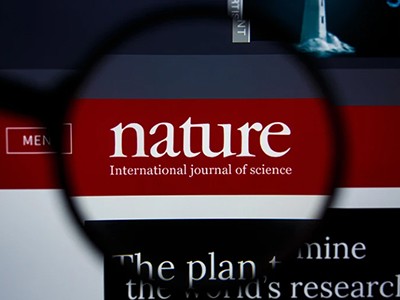[ad_1]

Women and early-career researchers: Nature wants to publish your research.Credit: Getty
Researchers submitting original research to Nature over the past year will have noticed an extra question, asking them to self-report their gender. Today, as part of our commitment to helping to make science more equitable, we are publishing in this editorial a preliminary analysis of the resulting data, from almost 5,000 papers submitted to this journal over a five-month period. As well as showing the gender split in submissions, we also reveal, for the first time, possible interactions between the gender of the corresponding author and a paper’s chance of publication.
The data make for sobering reading. One stark finding is how few women are submitting research to Nature as corresponding authors. Corresponding authors are the researchers who take responsibility for a manuscript during the publication process. In many fields, this role is undertaken by some of the most experienced members of the team.
The giant plan to track diversity in research journals
During the period analysed, some 10% of corresponding authors preferred not to disclose their gender. Of the remainder, just 17% identified as women — barely an increase on the 16% we found in 2018, albeit using a less precise methodology. By comparison, women made up 31.7% of all researchers globally in 2021, according to figures from the United Nations science, education and cultural organization UNESCO (see go.nature.com/3wgdasb).
Large geographical differences were also laid bare. Women made up just 4% of corresponding authors of known gender from Japanese institutions. Of researchers from the two countries submitting the most papers, China and the United States, women made up 11% and 22%, respectively. These figures reflect the fact that women’s representation in research drops at the most senior levels. They also mirror available data from other journals1, although it is hard to find direct comparisons for a multidisciplinary journal such as Nature.
At Cell, which has a life-sciences focus, women submitted 17% of manuscripts between 2017 and 2021, according to an analysis of almost 13,000 submissions2. The most recent data on gender from the American Association for the Advancement of Science (AAAS), which publishes the six journals in the Science family, is collected and reported differently. Some 27% of their authors of primary and commissioned content, and their reviewers, are women, according to the AAAS Inclusive Excellence Report (see go.nature.com/3t6yyr8). Nonetheless, all of these figures are just too low.
Another area of concern is acceptance rates. Of the submissions included in the current Nature analysis, those with women as the corresponding author were accepted for publication at a slightly lower rate than were those authored by men. Some 8% of women’s papers were accepted (58 out of 726 submissions) compared with 9% of men’s papers (320 out of 3,522 submissions). The acceptance rate for people self-reporting as non-binary or gender diverse seemed to be lower, at 3%, although this is a preliminary figure and we have reason to suspect that the real figure could be higher, as described below. Once we have a larger sample, we plan to test whether the differences are statistically significant.
Sources of imbalance
So, at what stage in the publishing process is this imbalance introduced? Men and women seem to be treated equally when papers are selected for review. The journal’s editors — a group containing slightly more women than men — were just as likely to send papers out for peer review for women corresponding authors as they were for men. For both groups, 17% of submitted papers went for peer review.
Our efforts to diversify Nature’s journalism are progressing, but work remains
A difference arose after that. Of those papers sent for review, 46% of papers with women as corresponding authors were accepted for publication (58 of 125) compared with 55% (320 of 586) of papers authored by men. The acceptance rate for non-binary and gender-diverse authors was higher at 67%. However, this is from a total of only three reviewed papers, a figure that is too small to be meaningful.
This difference in acceptance rates during review tallies with the findings of a much larger 2018 study of 25 Nature-family journals, which used a name-matching algorithm, rather than self-reported data3. Looking at 17,167 papers sent for review over a 2-year period, the authors found a smaller but significant difference in acceptance rates, with 43% for papers with a woman as corresponding author, compared with 45% for a man. However, they were unable to say whether the difference was attributable to reviewer bias or variations in manuscript quality.
Peering into peer review
How much bias exists in the peer-review process is difficult to study and has long been the subject of debate. A 2021 study in Science Advances that looked at 1.7 million authors across 145 journals between 2010 and 2016 found that, overall, the peer-review and editorial processes did not penalize manuscripts by women4. But that study analysed journals with lower citation rates than Nature, and its results contrast with those of previous work5, which found gender-based skews.
Moreover, other studies have shown that people rate men’s competence more highly than women’s when assessing identical job applications6; that there is a gender bias against women in citations; and that women are given less credit for their work than are men7. Taken together, this means we cannot assume that peer review is a gender-blind process. Most papers in our current study were not anonymized. We did not share how the authors self-reported, but editors or reviewers might have inferred gender from a corresponding author’s name. Nature has offered double-anonymized peer review for both authors and reviewers since 2015. Too few take it up for us to have been able to examine its impact in this analysis, but the larger study in 2018 looked at this in detail3.
Data limitations
There are important limitations to Nature’s data: we must emphasize again that they are preliminary. Moreover, they provide the gender of only one corresponding author per paper, not the gender distribution of a paper’s full author list. Furthermore, they don’t describe any other differences between authors.
There are also aspects of the data that need to be investigated further. For example, we need to look into the possibility that the option of reporting as non-binary or gender diverse is being misinterpreted by some authors with English as a second language. We think that ironing out such misunderstandings could result in a higher acceptance rate for non-binary authors.
Nature’s under-representation of women
Most importantly, these data give no insight into author experiences in relation to race, ethnicity and socio-economic status. Although men often have advantages compared with women, other protected characteristics also have a significant impact on scientists’ careers. Nature is participating in an effort by a raft of journal publishers to document and reduce bias in scholarly publishing by tracking a range of characteristics. This is a work in progress and sits alongside Springer Nature’s wider commitment to tackling inequity in research publishing.
So what can Nature do to ensure that more women and minority-gender scientists find a home for their research in our pages?
First, we want to encourage a more diverse pool of corresponding authors to submit. The fact that only 17% of submissions come from corresponding authors who identify as women might reflect existing imbalances in science (for example, it roughly tracks with the 18% of professor-level scientists in the European Union who are women, as reported by the European Commission8).
But there remains much scope for improvement. We know that the workplace climate in academia can push women out or see them overlooked for senior positions9. A 2023 study published in eLife found that women tend to be more self-critical of their own work than men are and that they are more frequently advised not to submit to the most prestigious journals10.
Second, just as prestigious universities should not simply lament their low application numbers from under-represented groups, we should not sit back and wait for change to come to us. To this end, our editors will actively seek out authors from these communities when at conferences and on laboratory visits. We will be more proactive in reaching out to women and early-career researchers to make sure they know that Nature wants to publish their research. We encourage authors with excellent research, at any level of seniority and at any institution, to submit their manuscripts.
Third, in an effort to make peer review fairer, Nature’s editors have been actively working to recruit a more diverse group of referees; 2017 data found that women made up just 16% of our reviewers. We need to double down on our efforts to improve this situation and update readers on our progress. In the future, we also plan to analyse whether corresponding authors’ gender affects the number of review cycles they face, and whether there are differences in relation to gender according to discipline and prestige of their affiliated institution. We need to improve our understanding of the sources of inequity before we can work on ways to address them. Nature’s editors will also strive to minimize our own biases through ongoing unconscious-bias training.
Last but not least, we will keep publishing our data on authorship and peer review, alongside complementary statistics on the gender of contributors to articles outside original research. Although today’s data present just a snapshot, Nature remains committed to tracking the gender of authors, to regularly updating the community on our efforts, and to exploring ways to make the publication process more equitable.
[ad_2]
Source Article Link




